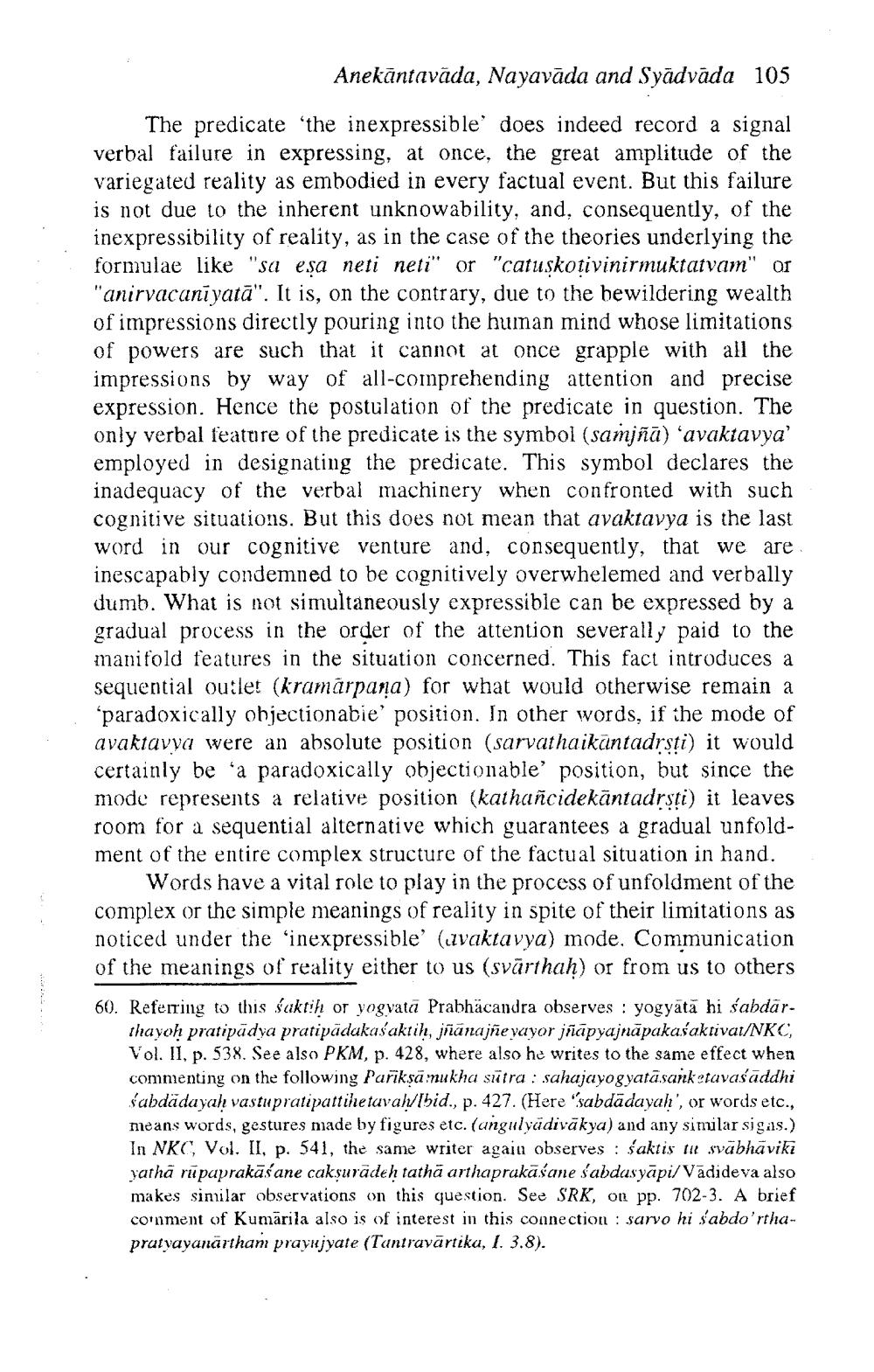________________
Anekāntavāda, Nayavāda and Syādvāda 105
The predicate the inexpressible' does indeed record a signal verbal failure in expressing, at once, the great amplitude of the variegated reality as embodied in every factual event. But this failure is not due to the inherent unknowability, and, consequently, of the inexpressibility of reality, as in the case of the theories underlying the formulae like "sa esa neti neti" or "catuskotivinirmuktatvam" or "anirvacanīyatā". It is, on the contrary, due to the bewildering wealth of impressions directly pouring into the human mind whose limitations of powers are such that it cannot at once grapple with all the impressions by way of all-comprehending attention and precise expression. Hence the postulation of the predicate in question. The only verbal feature of the predicate is the symbol (samjñā) 'avaktavya' employed in designating the predicate. This symbol declares the inadequacy of the verbal machinery when confronted with such cognitive situations. But this does not mean that avaktavya is the last word in our cognitive venture and, consequently, that we are inescapably condemned to be cognitively overwhelemed and verbally dumb. What is not simultaneously expressible can be expressed by a gradual process in the order of the attention severally paid to the manifold features in the situation concerned. This fact introduces a sequential outlet (kramarpana) for what would otherwise remain a “paradoxically objectionabie' position. In other words, if the mode of avaktavya were an absolute position (sarvathaikāntadrsti) it would certainly be 'a paradoxically objectionable position, but since the mode represents a relative position (kathañcidekāntadrsti) it leaves room for a sequential alternative which guarantees a gradual unfoldment of the entire complex structure of the factual situation in hand.
Words have a vital role to play in the process of unfoldment of the complex or the simple meanings of reality in spite of their limitations as noticed under the 'inexpressible' (uzvaktavya) mode. Communication of the meanings of reality either to us (svārthah) or from us to others
60. Referring to this sakt:h or yogvatā Prabhäcandra observes : yogyată hi sabdar
thayoh pratipadya pratipadukas aktih, jñanajñe vayor jñāpyajnapakasaktivat/NKC, Vol. II, p. 538. See also PKM, p. 428, where also he writes to the same effect when commenting on the following Pariksā nukha sutra : sahajayogyatāsankotavasāddhi sabdadayah vastupratipattinetavah/Ibid., p. 427. (Here 'sabdādayah', or words etc., means words, gestures made by figures etc. (angulyádivākya) and any similar sigas.) In NKC, Vol. II, p. 541, the same writer agaiu observes : Śaktis tu svābhāviki yathā rūpaprakāśane cakşurādeh tathā arthaprakāśane sabdasyāpi/Vadideva also makes similar observations on this question. See SRK, on pp. 702-3. A brief cornment of Kumārila also is of interest in this connection : sarvo hi s'abdo'rthapratyayanartham prayujyate (Tantravārtika, I. 3.8).




